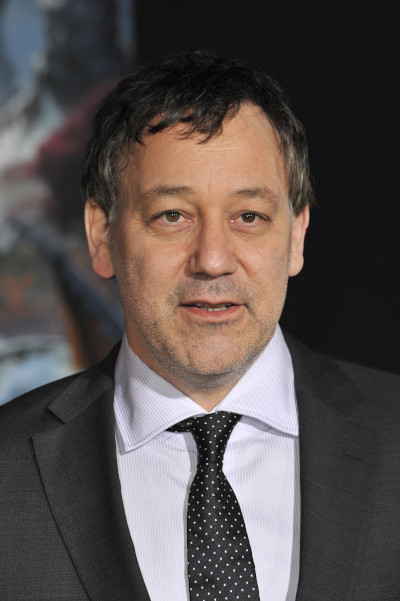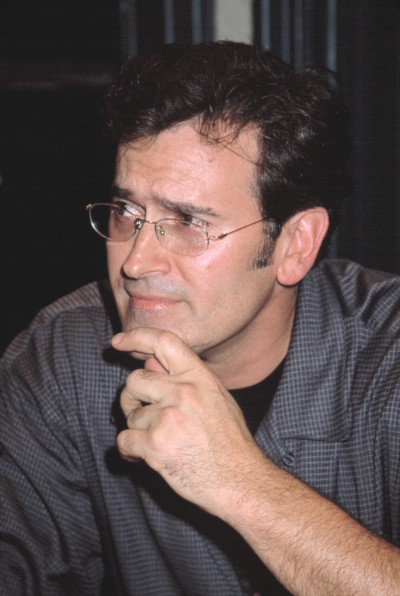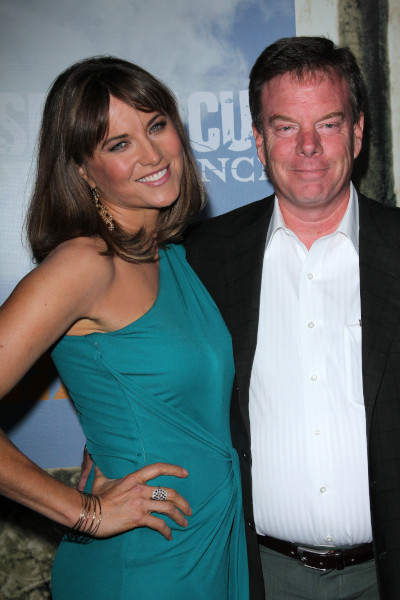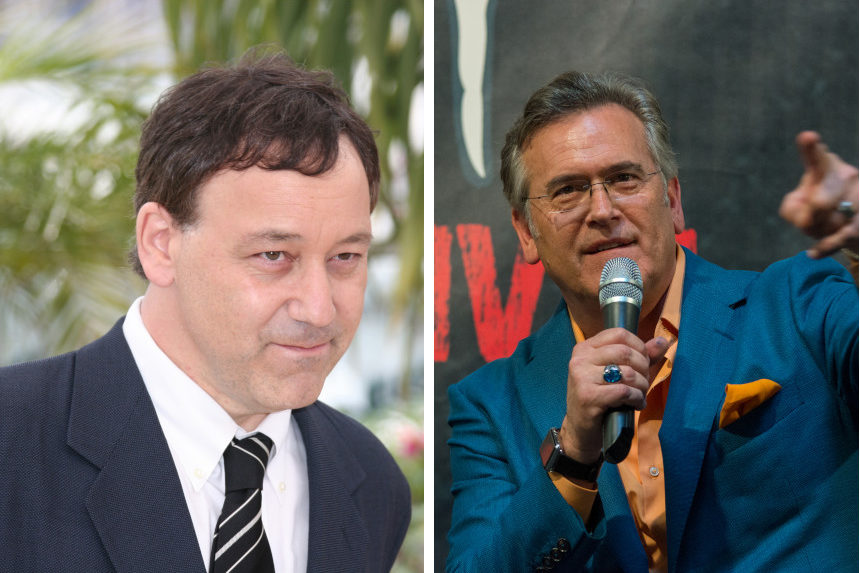How could a film hailed for its brutal, graphic and unrelenting horror also function as a real-life fairy tale? Why would a movie about college students falling under attack by zombies and other supernatural nightmares really be the story of childhood friends who somehow managed to achieve their wildest dreams? And how could a film financed by donations and shot mainly near a cabin in Tennessee kickstart so many careers that have had a real and lasting impact on Hollywood? Those answers can all be found in the story of The Evil Dead, a horror classic that’s also a true tale of luck, friendship, and ingenuity. Here’s what happened within the woods.

Bruce Campbell and Sam Raimi were both born in Royal Oak, Michigan. The pair met in high school in 1975, and started experimenting with making films using a Super 8 home movie-style camera. While their early efforts tended to be comedies, the duo soon found themselves drawn to crime flix and eventually, horror. Raimi and Campbell caught films at the local drive-in to study for making a horror project; Raimi envisioned making a longer short subject that would serve as a proof-of-concept piece to raise money for making a feature film.

Enter Rob Tapert. An economics major and the roommate of Raimi’s older brother at Michigan State, Tapert met the younger Raimi and Campbell and shared their enthusiasm. The trio took on distinct roles, with Tapert as producer, Campbell as actor, and Raimi as writer and director. For their proof-of-concept film, Raimi settled on a supernatural horror picture that would be set in the woods and influenced by the likes of writer H.P. Lovecraft. Raimi also decided to cast a female lead, calling on friend Ellen Sandweiss. Other friends filled out the cast and crew, and the group put together $1600 for the budget. Raimi and company convinced a local theater to run the 32-minute Within the Woods ahead of a midnight showing of The Rocky Horror Picture Show on October 30, 1978. A critic from The Detroit News caught the picture and gave it a positive write-up. All the determined band had to do next was assemble the money for a feature film version of their scary movie.
After getting some financial advice from lawyer Phill Gillis, Raimi and company basically went to everyone they knew, including friends, families, and local merchants. Their fund-raising target had been $100,000, but their film-in-the-making would eventually take $375,000 to finish. The script for the new feature kept plot basics from Within the Woods while pulling in more Lovecraft inspiration, including a riff on the author’s Book of the Dead, or Necronomicon. Campbell and Sandweiss were back in front of the camera. Tom Sullivan, who worked on make-up and effects for Woods, and cinematographer Tim Philo also returned. The rest of the crew was mostly made up of friends and family. When the team scouted locations, they found more local support in Morristown, Tennesse, so they chose that location for shooting.
With the low budget and a general lack of any real camera rigs or supporting equipment, Raimi and his team relied on ingenuity and making due with what they had. This included tricks like swinging the camera on cords, mounting it on a bike, and having crew members carry the camera on a board; that particular low-budget emulation of a Steadicam rig was nicknamed the “shaky cam.” The makeshift camera rigs sometimes led to strange angles and camera movements that added to the atmosphere of the film; Raimi also employed extreme angles to add to a sense of disorientation to keep the audience off balance. The physical production began in the fall of 1979 and went on until January of 1980. All accounts indicate that it was a difficult shoot, from rugged terrain to dropping temperatures to occasional injuries. When shooting finally wrapped, Raimi had an enormous amount of film that needed to be edited.
Edna Paul, who belonged to an editing group in Detroit, came aboard to edit the film. Her editing assistant had already worked as a production assistant in movies, and he would contribute to the editorial process, notably the scene in the shed; the assistant’s name was Joel Coen. Coen and Raimi struck up a friendship, and Coen took the notion of a proof-of-concept film to heart. Joel and his brother Ethan put together a trailer, and only a trailer, for a crime film that they wanted to make, Blood Simple. Bruce Campbell appeared in the trailer, and the footage would attract enough backers to get their own movie made.
The trailer for The Evil Dead (Uploaded to YouTube by Movieclips Classic Trailers)
After the film was finally finished, the team went for a single theatre premier at Redford Theatre in Detroit as the first step in trying to land a distributor. The debut showing of Book of the Dead on October 15, 1981 pulled in hundreds of patrons, giving Raimi the idea of making the film a touring attraction to build word-of-mouth and hopefully secure a deal. Raimi earned a fortuitous meeting with film distributor Irvin Shapiro; Shapiro had co-founded the Cannes Film Festival and also had a solid history with independently-produced zombie films, having distributed George A. Romero’s Night of the Living Dead. Shapiro thought that Raimi should aim for international distribution, but felt that the movie needed a new title. Raimi landed on The Evil Dead.
Shapiro and Raimi put The Evil Dead in the 1982 installment of Cannes as an out-of-competition entry. One of the attendees at the initial screening was Stephen King. King became an immediate fan and an ardent supporter of the film. His endorsement drew instant attention, and his assessment of the movie as the “most ferociously original film of the year” would find its way into the movie’s marketing. That buzz led directly to a distribution deal in the United Kingdom. American horror magazine Fangoria also began to champion the film, and New Line Cinema came aboard as a distributor in the United States. The entry of New Line came as a huge relief to Raimi, as the company paid him enough to reimburse every one of the friends, family members, and businesses that had invested in the film. New Line threw its weight behind the movie, opting for a theatrical release simultaneous with a home video release on VHS, an almost unheard-of strategy.
New Line and Raimi had to fight the MPAA on the film’s rating; it was originally given an X for its extreme gore. That led to the movie being banned in some countries, a situation that only raised its profile. The Evil Dead was a minor sleeper hit in the States, but did significantly better in other countries. At the time, the zombie genre had more support in countries like Italy, home of big filmmakers in the subgenre like Lucio Fulci. Ultimately, the film’s original set of investors would get paid back five times what they had originally backed. The home video strategy worked as well, with film building a cult following in rentals and selling huge numbers in the U.K.
The trailer for Blood Simple (Uploaded to YouTube by StudiocanalUK)
When The Coen Brothers had a hit with Blood Simple, they teamed up with Raimi to make a comedy, Crimewave. That 1985 film was a major flop. On the upside, the Coen Brothers next film, Raising Arizona, was a minor hit and put them back on track for their extraordinary careers. At the urging of Shapiro, Raimi decided to embrace the notion of a horror franchise and made Evil Dead 2: Dead by Dawn. Stephen King lent a hand again, helping convince producer Dino de Laurentiis to back the movie. Raimi and company found themselves with a much larger budget; he decided to inject more dark comedy in the film. Campbell’s talent for comedy and natural charisma came together to make his Ash Williams a new horror hero. Evil Dead 2 was a minor hit, but it generated more positive reviews and gave Raimi a firmer footing in film.

Since then, Raimi, Tapert, and Campbell built the Dead brand with the follow-up film Army of Darkness and the subsequent TV series Ash vs Evil Dead. Raimi continued to regularly direct films like the critically acclaimed A Simple Plan. In the ‘90s, Raimi and Tapert executive produced the hugely successful syndicated TV series Hercules: The Legendary Journeys, as well as its spin-offs Xena: Warrior Princess and Young Hercules. Tapert married Xena herself, Lucy Lawless. Campbell would appear across the various series as charming King of Thieves, Autolycus, and go on to have an enduring career in cult favorite TV shows and films like The Adventures of Brisco County, Jr. and Bubba Ho-Tep. Tapert had continued to produce horror films (like an Evil Dead remake) and has created other television series like Spartacus (which co-starred Lawless). The Coen Brothers obviously went on to have a massively acclaimed career, making movies like Fargo and O Brother Where Art Thou.
The trailer for the 2002 film Spider-Man (Uploaded to YouTube by Movieclips Classic Trailers)
Of course, the biggest success for Raimi came in 2002 when he directed the first Spider-Man feature film. The massive hit gave birth to a franchise. Raimi directed both 2004’s Spider-Man 2 and 2007’s Spider-Man 3; Spider-Man 2 is widely considered by both critics and fans to be one of the best films in the super-hero genre. Collectively, the three films made over $2.5 billion at the box office worldwide (and each one included a Bruce Campbell cameo). Raimi had planned to make a fourth film with Campbell taking a prominent villain role, but disagreements with the studio at Sony and Raimi’s own doubt that he could make the quality of picture he wanted in the time frame required led to Raimi walking away. However, 2022 will mark his return to directing Marvel characters as he has already completed filming Doctor Strange in the Multiverse of Madness, a sequel that will follow up on both the critically acclaimed WandaVision and, your irony may vary, Spider-Man: No Way Home.
Forty years on, the struggle of a bunch of young filmmakers in the cold woods has yielded some of the most successful and acclaimed careers in film. In a way, Raimi’s Spider-Man was itself a proof-of-concept for the modern MCU; yes, Blade opened the door and 2000’s X-Men was a hit, but it was Raimi’s kinetic style and faithfulness to the core concepts that pushed Marvel into the blockbuster zone. The Coens have been nominated for 13 Oscars together, and won four. Tapert continues to successfully produce in film and TV, and, honestly, who doesn’t love Bruce Campbell? It may have started with a horror story, but it most definitely ended like a fairy tale.
Featured image: (Denis Makarenko / Shutterstock.com; Markus Wissmann / Shutterstock.com)
Become a Saturday Evening Post member and enjoy unlimited access. Subscribe now



